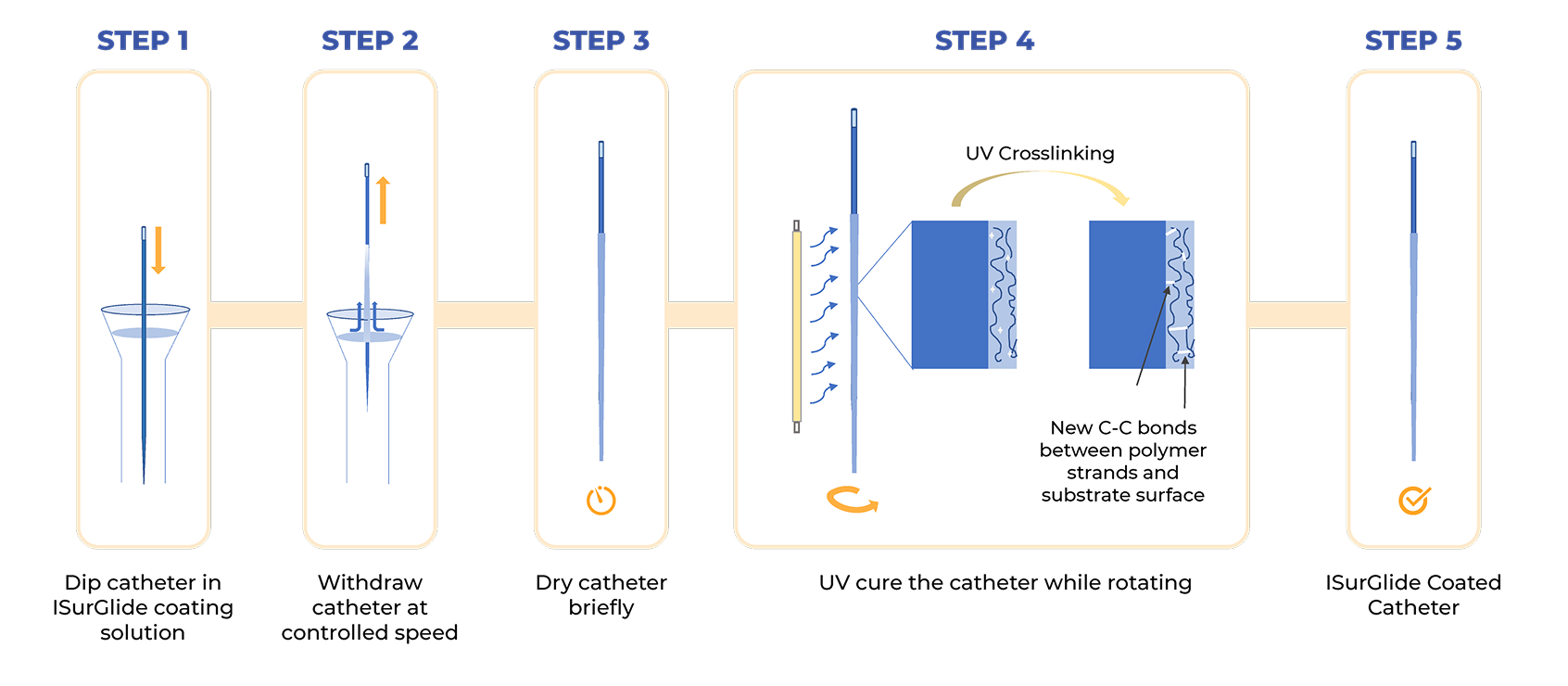ISurGlide lubricious hydrophilic coatings and primers are pre-formulated and ready to use right out of the bottle. Our primers and hydrophilic coatings are most commonly applied using a dip-coating procedure followed by a UV cure to bond the coating to the surface of your device. The process below applies to both our primers and hydrophilic coatings. Specific parameters vary based on your substrate and use case.

Performance testing of hydrophilic coatings will ultimately be based on your requirements, but always involves testing for lubricity (slipperiness) and durability. If you’re testing an invasive medical device with a lubricious coating, we use a proprietary tortuous path test created specifically to allow testing of durability and particulate.
Since specialized equipment is generally required for testing hydrophilic coatings, many of our customers choose to have ISurTec perform testing services for them.
ISurTec is a technology innovator with a deep passion for identifying, creating and commercializing new methods and products that enable companies to fulfill their mission.
Certified to the ISO 9001:2015 Standard by the Systems Certification Body an IAPMO Company
Innovative Surface Technologies, Inc.
1045 Westgate Drive Suite 100
Saint Paul, MN 55114
651-209-9757
ISurTec will consistently provide high quality products and services that meet requirements for medical device coatings and other scientific coatings. We will actively strive to bring excellence to the surface in all that we do, meeting or exceeding customers’ needs and expectations, and improve the quality of our products and service by enabling each employee to fulfill their job responsibilities correctly the first time.
The following are trademarks of ISurTec: ISurTec®, ISurGlide®, ISurLite®, ISurTherm®, ISurCoat®, PhotoPrime®, ISurGuard™, ISurBlock™, ISurCell™. All rights are expressly reserved.